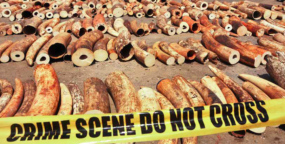Posted on 24 Jul 2017
Countries that act as transit hubs for international wildlife trafficking are a critical, highly profitable part of the illegal wildlife smuggling supply chain, but are frequently overlooked. While considerable attention is paid to stopping illegal poaching at the chain’s origins in national parks and changing end-user demand (e.g., in China), countries that act as midpoints in the supply chain are critical to stopping global wildlife trafficking. They are needed way stations for traffickers who generate considerable profits, thereby driving the market for poaching. This is starting to change, as U.S., European, and some African policymakers increasingly recognize the problem, but more is needed to combat these key trafficking hubs.
In East and Central Africa, South Sudan and Uganda act as critical waypoints for elephant tusks, pangolin scales, hippo teeth, and other wildlife, as field research done for this report reveals. Kenya and Tanzania are also key hubs but have received more attention. The wildlife going through Uganda and South Sudan is largely illegally poached at alarming rates from Garamba National Park in the Democratic Republic of Congo, South Sudan, points in West Africa, and to a lesser extent Uganda, as it makes its way mainly to East Asia. Worryingly, the elephant population in Congo has decreased by an estimated 75 percent since 1996 mainly due to poaching, according to park officials in Congo.1 Since conflict broke out in South Sudan in December 2013, South Sudanese poachers and armed groups have increasingly crossed into Garamba park in Congo, for example, through the little monitored Lantoto National Park in South Sudan, and likely now make up the majority of poachers there, according to park officials and United Nations experts. Joseph Kony’s Lord’s Resistance Army (LRA), armed Sudanese poachers, and Mbororo pastoralists in Congo also continue to poach in Garamba.



